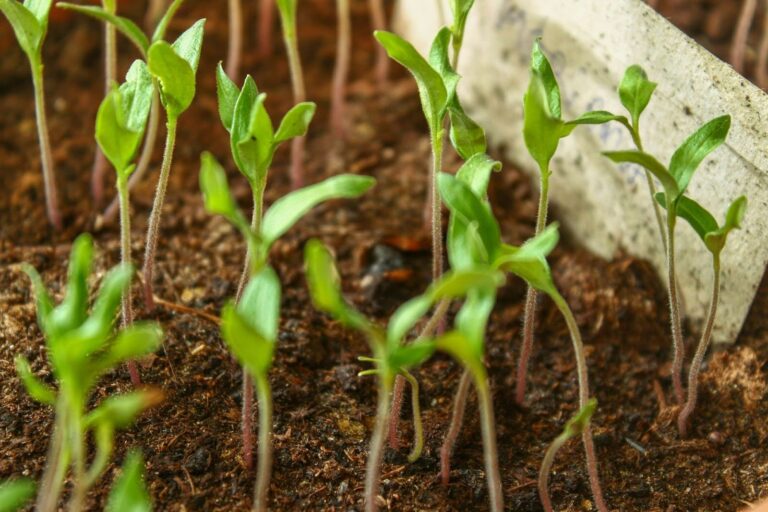You’re giving your cannabis plants all the right conditions, but growth is slow, colors are fading, and your leaves are curling or burning. The issue may not be in your feeding or lighting, it could be that your soil pH is too high, creating a barrier between your plants and the nutrients they need.
Check your soil pH before overhauling your whole setup or second-guessing your nutrient line. It’s one of the most overlooked factors in cannabis growing. When the pH level gets too high, it creates a wall between your plant’s roots and the nutrients you’re giving them. Everything might be present in the soil, but your plants can’t use any of it.
This kind of nutrient lockout caused by high pH is subtle initially, but if ignored, it can wreck your harvest. The good news is that it’s not hard to fix once you understand what’s going on.
Let’s explore how high pH affects growth, how to recognize it quickly, and how to bring soil back to the sweet spot so cannabis plants can thrive.
Understanding High pH in Cannabis Soil
Soil pH tells you how acidic or alkaline your growing medium is, measured on a scale from 0 to 14. For cannabis, once the ideal pH range moves up, you’re entering alkaline territory, and that’s when problems begin.
When your pH is too high, it prevents your plants from absorbing vital nutrients like nitrogen, magnesium, and iron, leading to nutrient deficiencies. Even if you’re feeding the right amounts of nitrogen, magnesium, and iron, your plants can’t absorb them if the pH is too high. This creates a hidden wall between your plants and their food.
Causes of High pH in Cannabis Soil
High pH in your soil means it is more alkaline, and this can be caused by:
- Water Quality: Using water with a high pH level can increase the overall pH of the soil over time. Always check the pH of your water source to ensure it’s in the right range.
- Soil Composition: Some soil types, like those rich in limestone or calcium carbonate, are naturally more alkaline. Adding materials such as agricultural lime (calcium carbonate), dolomitic lime (which also adds magnesium), or wood ash can also raise the pH.
Certain fertilizers, especially those high in calcium or containing nitrate-based nitrogen (like calcium nitrate or sodium nitrate), can contribute to a higher pH over time.
- Overuse of pH-Altering Amendments: Frequent use of amendments like dolomitic lime or other alkaline substances can raise the pH of your soil over time. Regular pH testing is essential to track these changes.
- Inadequate Soil Drainage: Poor drainage can sometimes cause the accumulation of alkaline salts in the soil, which increases pH. Ensuring proper drainage can help mitigate this issue.
- Soil Amendments with Alkaline Nature: Organic amendments like wood ash, bone meal, or certain composts can raise the pH of the soil. Be mindful of the types of amendments you use to avoid increasing alkalinity.
How High pH Affects Your Cannabis Plants
When the pH of your soil is too high, your cannabis plants struggle to absorb essential nutrients. Common effects include:
- Nutrient Deficiency: A high pH can lock up nutrients like iron, manganese, and phosphorus, leading to deficiencies. These often manifest as yellowing leaves (chlorosis) or stunted growth.
- Reduced Growth: Plants may appear weak or develop poorly if they cannot access the nutrients they need, reducing the overall growth rate.
- Poor Bud Development: In flowering stages, a high pH can affect the plant’s ability to produce quality buds, leading to smaller, less potent flowers.
- Impact on Microbial Activity: High pH can negatively affect soil microbes, which are crucial for breaking down organic matter and making nutrients available. This leads to reduced microbial diversity and nutrient cycling in the soil.
- Increased Susceptibility to Pests and Diseases: Due to high pH, nutrient-stressed plants are more vulnerable to pest infestations and diseases, as their weakened immune systems make them easy targets.
- Delayed Flowering: High pH can also delay the flowering process due to the nutrient stress, preventing the plant from reaching its full potential during bloom.
So, what symptoms indicate that your cannabis soil has a high pH? Let us understand.
Symptoms of High pH in Cannabis
If your soil pH is too high, cannabis high pH symptoms will start showing up, sometimes subtly at first. The key is knowing what to watch for before the problem snowballs.
Here’s a breakdown of the most common signs of high pH stress in cannabis:
- Yellowing of Young Leaves: The top leaves lose their vibrant green and turn pale yellow while the veins stay darker. This is often the first visual sign of stress.
- Lower Leaf Fading and Shedding: Older leaves near the base begin to yellow, dry out, and eventually fall off as the plant reallocates resources.
- Purpling and Curling of Leaves: Leaves may shift to a bluish or purplish hue with noticeable downward curling at the edges.
- Patchy Yellowing Between Veins: Mid-tier leaves display interveinal chlorosis (yellowing between green veins) that hints at root nutrient issues.
- Leaf Tip Damage and Deformation: Tips may appear burnt, curled, or crinkled. New growth often looks twisted or irregular.
- Darkened Leaf Edges: Some leaves develop dusky blue or purple edges with curled and brittle tips, indicating escalating stress.
- Stunted Growth: Vertical height slows, lateral branching stops, and the plant overall appears smaller than it should be for age.
- Leaf Necrosis: Leaves develop dry, brown, and brittle patches that eventually spread and lead to leaf drop.
- Weak Bud Formation: In flowering plants, buds may appear underdeveloped, airy, or discolored due to a lack of nutrient uptake.
- Wilting Despite Adequate Watering: High pH can cause root stress, making plants look thirsty even when moisture levels are acceptable.
So, what methods can you use to test the pH of your cannabis soil? Let’s find out.
Methods to Test pH in Cannabis Soil
Here’s a comprehensive guide on how to test the pH in your cannabis soil, including additional methods and tips:
1. pH Test Strips: These are a basic, cost-effective way to quickly read soil pH. They’re commonly used by beginners or for routine checks.
How To: Take a small amount of soil, mix it with distilled water in a clean container, dip the strip in, and read the color against the pH chart within the time window suggested on the strip package.
2. pH Meter: This tool provides more accurate and reliable pH readings than test strips. It’s a good choice if you test frequently or need consistent results.
How To: Calibrate your pH meter as per the manufacturer’s instructions, then insert it directly into wet soil or into a soil-and-distilled-water mixture, and wait for the digital reading.
3. Soil Test Kits: These kits include chemical reagents that reveal pH and sometimes nutrient levels through a color-based reaction. They’re popular for home growers who want more detail than strips can provide.
How To: Mix the provided solution or powder with your soil sample according to the kit instructions. After the reaction, compare the resulting color with the included chart to determine the pH.
4. Testing with Distilled Water: This method ensures that minerals or contaminants in regular tap water don’t skew your pH readings, offering a clearer look at your soil’s condition.
How To: Mix equal parts soil and distilled water in a container, stir well, let it sit for about 30 minutes, then test the water with either a pH meter or a test strip.
5. DIY Method with Baking Soda and Vinegar: A rough, non-technical way to tell whether your soil leans acidic or alkaline. It’s not precise, but it can give you a general idea.
How To: Put two small soil samples in separate containers. Add vinegar to one—if it fizzes, the soil is alkaline. Add water and then baking soda to the other—if it fizzes, the soil is acidic.
6. Professional Lab Testing: This is the most thorough option for understanding your soil. Labs provide detailed reports on pH, nutrient content, and more, making it ideal for large or commercial grows.
How To: Collect a clean soil sample as directed by the lab (usually from multiple areas and depths), seal it in a clean bag or container, and mail it to the lab for analysis.
7. pH Testing in Hydroponics: Hydroponic systems need precise pH monitoring, as the nutrient solution is the only source of food for the plants. This method uses liquid pH meters designed for solution testing.
How To: Calibrate your liquid pH meter, then submerge the probe into your hydroponic solution and wait for the reading. Test regularly, as pH in hydroponics can shift quickly.
8. Visual Clues and Plant Health: Plants often show signs when the pH is off, such as discoloration or slowed growth. These signs can help you decide when testing is needed.
How To: Observe your plants daily. If you see signs of nutrient deficiencies, test the pH of your soil or solution right away to confirm if that’s the cause.
9. Testing at Different Soil Depths: pH levels can vary across different soil layers. Sampling at various depths gives a more complete picture of the root environment.
How To: Take samples from the top, middle, and bottom layers of your soil, test each separately, and average the results or adjust your pH based on the most critical root zone.
10. Regular Monitoring: Soil pH doesn’t stay constant. It can shift over time due to watering, feeding, and plant activity. Regular checks help you stay ahead of problems.
How To: Make pH testing part of your weekly or biweekly routine, especially during major growth phases. Tracking results helps you spot trends and adjust before issues develop. PlanaCan supports this with a clear visual timeline for planning and tracking tasks. You can schedule pH checks, manage daily work, and adjust plans as needed. Everything stays in one place, so your team knows what needs to be done and nothing gets missed.
Now, let us discuss how to adjust the pH in your cannabis soil if it is high.
Adjusting High pH in Cannabis Soil
When adjusting high pH in your cannabis soil, it’s essential to take a systematic approach to ensure your plants receive the nutrients they need for optimal growth. High pH levels can prevent proper nutrient absorption, leading to deficiencies and stunted growth.
- Test the Soil pH: Begin by testing the pH of your soil using a reliable pH meter or test kit. This will help you determine how much the pH exceeds the ideal range and guide your adjustments.
- Add pH-Lowering Amendments: To lower the pH, incorporate soil amendments like elemental sulfur or organic materials such as peat moss. Elemental sulfur is a slow-release option, while peat moss offers a quicker, though less predictable, result in very high pH soils.
- Use pH-Lowering Fertilizers: Fertilizers with higher nitrogen or phosphorus content can help acidify the soil. For the best results, choose a fertilizer specifically designed for acid-loving plants.
- Water with pH-Lowered Solutions: Use distilled or rainwater, which typically has a neutral or slightly acidic pH, to gradually lower your soil’s pH. You can also add pH-down solutions to your water if necessary.
- Re-test Regularly: After making adjustments, re-test the soil pH every few weeks to ensure it stays within the optimal range. Since amendments take time to show effects, monitor your plants’ responses and be patient.
- Consider Soil Type: The soil’s properties affect how well it responds to pH adjustments. Sandy soils, for instance, may need more frequent adjustments due to faster drainage, while clay soils retain nutrients longer and may take more time to change.
- Mulching: Adding organic mulch can help maintain moisture levels and prevent pH fluctuations. Over time, decomposing mulch will slightly acidify the soil, helping to stabilize the pH.
- Avoid Over-Correction: While lowering high pH levels is essential, gradually change. Rapid shifts in pH can stress your plants and disrupt nutrient uptake. Monitor your plants closely to ensure they are adjusting well.
PlanaCan simplifies this by letting you define and automate tasks with customizable templates. Each step, from planting to harvest, can be outlined for specific strains or cycles. Once templates are set, you can schedule tasks on a calendar with just a few clicks, ensuring a smooth, consistent workflow.
- Adjust pH at the Right Time: It’s best to adjust pH before planting or during the vegetative stage. Making changes late in the flowering phase may stress your plants unnecessarily.
- Use pH-Specific Additives: In addition to sulfur and peat moss, consider using acidifying agents like citric acid or vinegar for quicker results, especially if you need to lower the pH quickly.
- Ensure Proper Drainage: Adequate drainage is essential when adjusting pH. It helps amendments mix well with the soil and prevents waterlogging, allowing for more effective adjustments.
- Complement with Proper Nutrient Management: Ensure your plants get the proper nutrients and adjust the pH. High pH can lead to iron, magnesium, and phosphorus deficiencies, so supplement with chelated forms of these nutrients to ensure proper absorption.
Now, let’s understand how to address pH imbalances caused by nutrient issues in detail below.
Addressing pH-Related Nutrient Issues
If your pH is out of range, it can prevent your plants from absorbing key nutrients properly, leading to deficiencies or toxicities. Understanding how pH affects nutrient availability and addressing these issues is essential for maintaining healthy plants and maximizing yields.
1. Nutrient Lockout Due to pH Imbalance
The following are some common nutrient issues caused by pH imbalance:
- Low pH (Acidic): If the pH drops below 6.0 (in soil) or 5.5 (in hydroponics), specific essential nutrients become too available, which can lead to toxicities.
- Toxicity Signs: When plants consume too much iron or manganese, they can yellow their leaves (chlorosis), curl them, and develop brown spots.
- Common Nutrient Issues: Overabsorption of iron, manganese, and copper while lacking calcium, magnesium, and phosphorus.
- High pH (Alkaline): If the pH goes above 7.0 (in soil) or 6.5 (in hydroponics), nutrients like iron, magnesium, and phosphorus become locked out, preventing plants from absorbing them.
- Toxicity Signs: Leaf yellowing, particularly between the veins, and stunted growth.
- Common Nutrient Issues: Deficiencies in nitrogen, phosphorus, potassium, and iron, leading to poor plant growth and development.
2. Common Nutrient Deficiencies Due to pH Imbalance
- Calcium Deficiency (Low pH):
- Symptoms: Yellowing of leaves, particularly at the edges, and possible necrosis (dead tissue).
- Cause: In acidic conditions, calcium becomes unavailable to the plant.
- Solution: Adjust the pH to a more neutral level (6.0-7.0 in soil). You can also add calcium supplements like calcium nitrate or lime to raise the pH slightly.
- Magnesium Deficiency (Low pH):
- Symptoms: Interveinal chlorosis, where the space between the leaf veins turns yellow, while veins stay green.
- Cause: Magnesium can be locked out in acidic conditions, especially in hydroponic systems.
- Solution: Raise the pH slightly or add magnesium sulfate (Epsom salt) to replenish magnesium.
- Iron Deficiency (High pH):
- Symptoms: Yellowing of leaves between the veins (interveinal chlorosis) while veins stay green.
- Cause: In alkaline conditions, iron becomes unavailable to the plant.
- Solution: For hydroponics, lower the pH slightly to around 5.5-6.0 or use chelated iron to make iron more accessible.
- Phosphorus Deficiency (High pH):
- Symptoms: Dark green leaves with reddish or purplish spots, especially in older leaves.
- Cause: Phosphorus becomes locked out when the pH is too high.
- Solution: Lower the soil pH to 6.0-6.5 or add a phosphorus-rich fertilizer to correct the deficiency.
3. How to Correct Nutrient Imbalances
- Adjusting pH:
- To raise pH (alkalinity): Add dolomitic lime, potassium bicarbonate, or calcium carbonate to increase the pH if it is too low.
- To lower pH (acidity): Use phosphoric acid or pH-down solutions to bring the pH into the optimal range for cannabis growth.
- Supplementing Nutrients:
- After adjusting the pH, supplement your plants with the necessary nutrients that may have been locked out, such as calcium, magnesium, or iron.
- Regularly monitor the pH of your growing medium and nutrient solution to ensure it stays within the ideal range.
Now, let us understand some practical tips to manage pH in your cannabis plants consistently.
Practical Tips for Ongoing pH Management
Here’s how you can manage pH levels effectively in your cannabis cultivation:
- Test the pH Regularly: Regularly test the pH of your water and nutrient solution to ensure it’s in the ideal range. This helps avoid nutrient deficiencies or toxicity, as pH directly impacts nutrient absorption. Aim for a pH between 6.0 and 7.0 for soil and 5.5 to 6.5 for hydroponics. Frequent testing prevents significant fluctuations that can harm plants.
- Adjust pH Correctly: If the pH is off, adjust it by adding pH down (to lower) or pH up (to raise). Do this gradually and test the pH after each adjustment to avoid drastic changes that can stress the plants.
- Use pH Balanced Water: Test your water’s pH before using it, as tap or well water can sometimes be out of the ideal range. Adjusting the pH before adding nutrients ensures a consistent and healthy environment for your plants.
- Monitor Nutrient Solution pH: After adding nutrients to your water, test the pH again, as nutrients can shift the pH. Adjust if necessary to keep the solution within the optimal range, ensuring your plants can absorb nutrients efficiently.
PlanaCan makes this easier by letting you automate tasks with customizable templates. You can map out each step for specific strains or cycles, from planting to harvest. Once templates are created, you can schedule tasks on a calendar with a few clicks, helping you maintain a smooth and consistent workflow.
- Keep an Eye on Your Plants’ Health: Watch for signs of pH imbalance, like yellowing leaves or stunted growth. If you notice these symptoms, test the pH and adjust as needed to prevent further stress and help plants recover.
- Consider pH Buffers: In hydroponic setups, pH buffers can help stabilize the pH for longer periods, reducing the need for frequent adjustments and maintaining a consistent environment for your plants.
- Maintain Consistency: Consistency in pH is crucial, especially during the flowering stage. Fluctuations can lead to nutrient lockout and poor growth. Regular testing and adjustments help stabilize the pH and support healthy plant development.
Conclusion
Managing pH in your cannabis soil is crucial for maximizing your plants’ potential. High pH can quietly damage your growth, but with the right tools and strategies, you can quickly identify, fix, and prevent it from becoming a problem. The key is simple: stay proactive, test regularly, and adjust early. Keeping your pH in check, your plants will thrive, leading to healthy growth, vibrant color, and heavy yields.
With PlanaCan, you have the tools to take your cultivation to the next level. It allows you to define and automate your cultivation processes with customizable templates for each step, whether it’s planting, pruning, or harvesting. It also provides a clear visual timeline to plan and track tasks, keeping you organized for months ahead and allowing for adjustments as needed. This centralized system ensures you never miss a task and helps maintain a consistent, streamlined workflow.
Schedule a free call today to see how PlanaCan can help you maximize your yields and manage your cannabis crops more efficiently.




